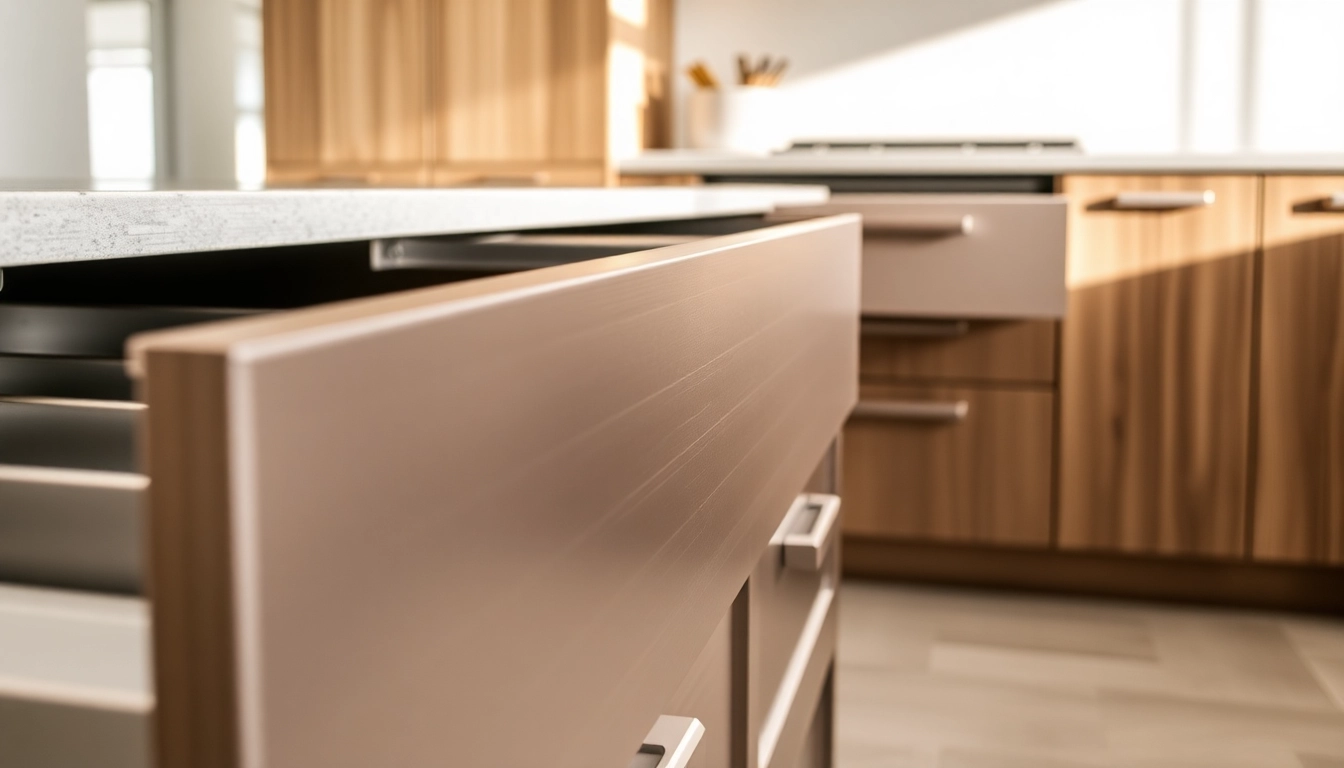Introduction to Metal Drawer Systems
Metal drawer systems have become an essential component in modern cabinetry and furniture design, offering unparalleled strength, versatility, and aesthetic appeal. These systems are commonly utilized in kitchens, offices, and storage solutions where durability and efficiency are paramount. In this comprehensive guide, we will explore the intricacies of Metal Drawer System, examining their types, advantages, and best practices for selection, installation, and maintenance.
What is a Metal Drawer System?
A metal drawer system typically consists of a combination of metal drawer boxes and slide mechanisms designed to facilitate smooth operation and enhanced functionality. These systems can be integrated into various furniture pieces, from kitchen cabinets to office desks, providing a robust solution for storing items efficiently. They may include features such as soft-close technology and full-extension slides, which allow users to access the entire drawer’s contents easily.
Benefits of Using Metal Drawer Systems
The popularity of metal drawer systems can be attributed to myriad benefits they offer:
- Durability: Metal is inherently more durable than wood, making it resistant to wear and tear, moisture, and pests.
- Design Versatility: Available in various finishes and styles, metal drawer systems can seamlessly blend with any interior design.
- Space Efficiency: The design typically allows for maximum storage space, utilizing the full depth and width of cabinets or furniture.
- Enhanced Functionality: Features like soft-close mechanisms prevent slamming, while full-extension slides provide easy access to the back of the drawer.
Applications in Home and Industry
Metal drawer systems are not limited to residential applications. Their robust nature ensures they’re equally effective in commercial and industrial settings. Common applications include:
- Kitchens: For drawer systems that hold pots, pans, utensils, and food items.
- Offices: For organizing documents, supplies, and equipment in desks and filing cabinets.
- Garages and Workshops: To store tools, hardware, and other equipment in a neat, accessible manner.
- Retail Displays: Metal drawer systems can improve aesthetics while providing functional storage for products.
Types of Metal Drawer Systems
Standard vs. Heavy-Duty Metal Drawer Systems
Metal drawer systems are generally categorized into standard and heavy-duty types, each serving different needs:
- Standard Drawer Systems: These are designed for general use, typically handling weights up to 75 lbs per drawer. Ideal for residential applications.
- Heavy-Duty Drawer Systems: Engineered to support heavier loads (up to 200 lbs or more), these systems are perfect for tools and equipment storage in industrial settings.
Undermount vs. Side-Mount Drawer Slides
Choosing between undermount and side-mount slides is crucial for both functionality and aesthetic expectations:
- Undermount Slides: These are installed beneath the drawer box, allowing for a cleaner look and full access to the drawer’s contents. They often include soft-close features.
- Side-Mount Slides: Fixed on the sides of the drawer, these are typically easier to install and more economical. However, they can take away some drawer space.
Customization Options for Various Needs
Metal drawer systems are highly customizable, allowing users to select specific widths, heights, depths, and finishes according to their particular needs. Additional options may include:
- Integrated dividers for organization.
- Special coatings for enhanced corrosion resistance.
- Configurations that optimize layout in various cabinetry types.
Choosing the Right Metal Drawer System for Your Needs
Considerations for Weight Capacity and Size
When selecting a metal drawer system, it’s essential to consider the weight capacity needs and dimensions of your space:
- Assessing items to be stored: Consider the average weight of contents to ensure that the drawer system can support it without compromising functionality.
- Space measurements: Precise measurements are needed to ensure the chosen system fits seamlessly within existing cabinetry.
Design Compatibility with Existing Interiors
Metal drawer systems come in various finishes, including chrome, matte black, and powder-coated colors, enabling them to match nearly any design aesthetic:
- Ensure the system complements the overall look of the furniture or cabinetry.
- Consider handles or knobs that may accentuate or contrast with the drawer’s design.
Assessing Quality and Durability
Quality is pivotal in ensuring long-term satisfaction with metal drawer systems. Look for:
- Material compositions, preferring high-grade steel over lower-grade alternatives.
- Reputable brands known for their durability and warranty offerings.
Installation Best Practices
Tools and Materials Required
Installing metal drawer systems is generally straightforward but requires specific tools and materials:
- Tools: Drill, screwdriver, level, measuring tape, and square.
- Materials: Mounting brackets, screws, and any customized components necessary for your specific drawer design.
Step-by-Step Installation Guide
Follow these steps for a successful installation of your chosen metal drawer system:
- Measure and mark the positions for the slides on the cabinet and drawer.
- Install the mounting brackets securely into the cabinet frames.
- Attach the slides to the sides of the drawer box and ensure they are level.
- Carefully insert the drawer into the cabinet, aligning it with the installed slides.
- Test the drawer operation to ensure it moves smoothly and aligns properly.
Common Mistakes to Avoid
Here are some common pitfalls to watch out for during installation:
- Failing to double-check measurements may lead to misalignment.
- Skipping the pre-drilling of holes could damage the drawer or cabinet.
- Neglecting to test the slides before securing everything may result in adjustments later.
Maintenance and Care for Longevity
Cleaning and Upkeep Tips
Regular maintenance is essential for keeping metal drawer systems functioning optimally:
- Use a damp cloth and mild detergent to clean the drawer surfaces and slides.
- Avoid abrasive cleaners that can scratching the metal finishes.
How to Identify Wear and Tear
Being proactive in identifying potential issues can extend the lifespan of your drawer system:
- Listen for unusual noises during operation, which may indicate damaged slides.
- Check for loose screws or hardware and tighten them as necessary.
When to Replace Your Metal Drawer System
Regardless of quality, every system will need replacing eventually. Consider the following:
- Visible damage such as rust or bent metal can compromise functionality.
- Repeated operational issues may signal the need for a new system.
Conclusion
Metal drawer systems provide an array of benefits, from durability and functionality to aesthetic versatility. Understanding the different types, selecting the right system, and ensuring proper installation and maintenance are all key to maximizing their value. Whether for residential or commercial use, a well-chosen metal drawer system can enhance organization and efficiency in any space.



